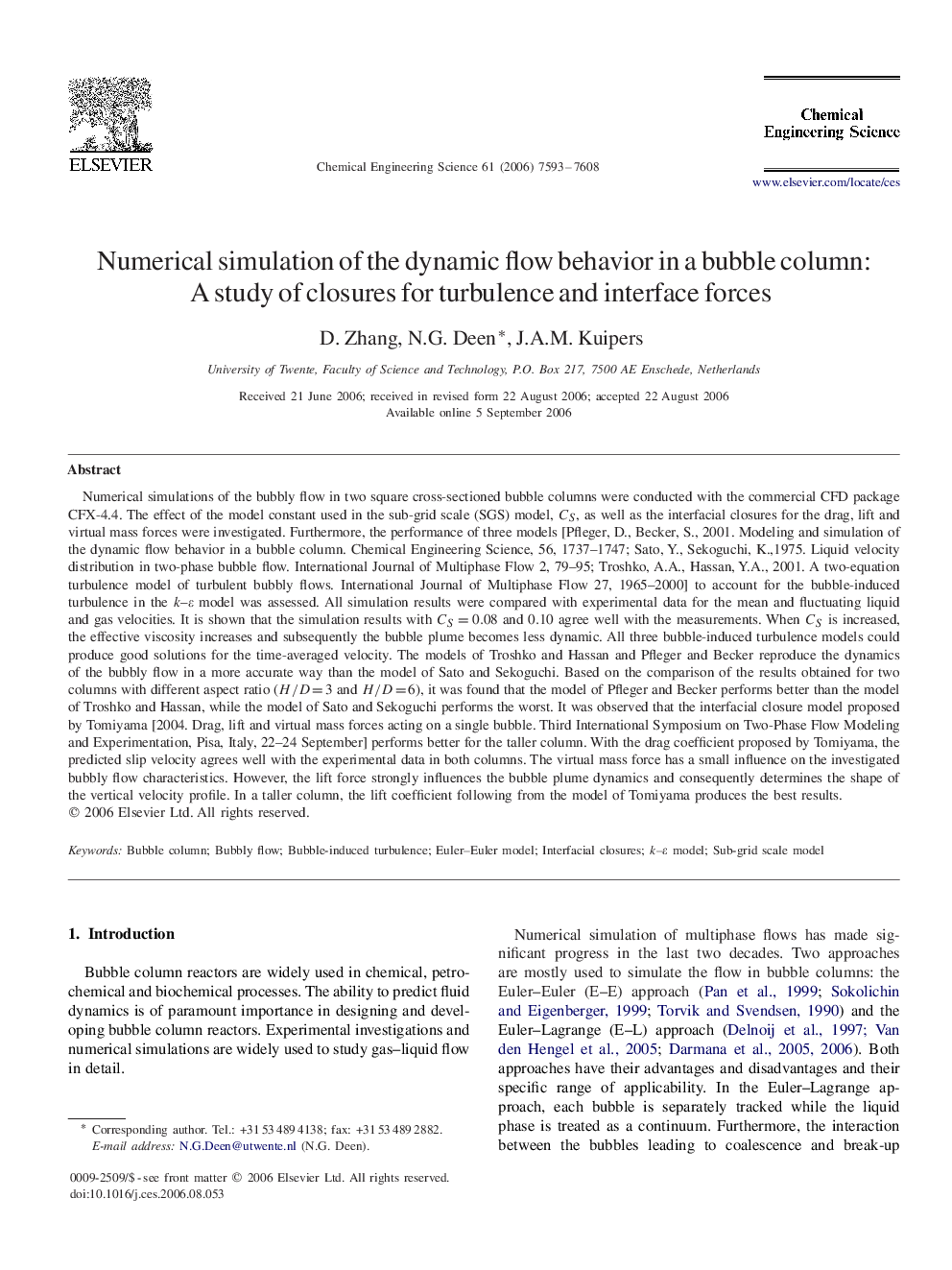| کد مقاله | کد نشریه | سال انتشار | مقاله انگلیسی | نسخه تمام متن |
|---|---|---|---|---|
| 158735 | 457017 | 2006 | 16 صفحه PDF | دانلود رایگان |

Numerical simulations of the bubbly flow in two square cross-sectioned bubble columns were conducted with the commercial CFD package CFX-4.4. The effect of the model constant used in the sub-grid scale (SGS) model, CSCS, as well as the interfacial closures for the drag, lift and virtual mass forces were investigated. Furthermore, the performance of three models [Pfleger, D., Becker, S., 2001. Modeling and simulation of the dynamic flow behavior in a bubble column. Chemical Engineering Science, 56, 1737–1747; Sato, Y., Sekoguchi, K.,1975. Liquid velocity distribution in two-phase bubble flow. International Journal of Multiphase Flow 2, 79–95; Troshko, A.A., Hassan, Y.A., 2001. A two-equation turbulence model of turbulent bubbly flows. International Journal of Multiphase Flow 27, 1965–2000] to account for the bubble-induced turbulence in the kk–εε model was assessed. All simulation results were compared with experimental data for the mean and fluctuating liquid and gas velocities. It is shown that the simulation results with CS=0.08CS=0.08 and 0.100.10 agree well with the measurements. When CSCS is increased, the effective viscosity increases and subsequently the bubble plume becomes less dynamic. All three bubble-induced turbulence models could produce good solutions for the time-averaged velocity. The models of Troshko and Hassan and Pfleger and Becker reproduce the dynamics of the bubbly flow in a more accurate way than the model of Sato and Sekoguchi. Based on the comparison of the results obtained for two columns with different aspect ratio (H/D=3H/D=3 and H/D=6H/D=6), it was found that the model of Pfleger and Becker performs better than the model of Troshko and Hassan, while the model of Sato and Sekoguchi performs the worst. It was observed that the interfacial closure model proposed by Tomiyama [2004. Drag, lift and virtual mass forces acting on a single bubble. Third International Symposium on Two-Phase Flow Modeling and Experimentation, Pisa, Italy, 22–24 September] performs better for the taller column. With the drag coefficient proposed by Tomiyama, the predicted slip velocity agrees well with the experimental data in both columns. The virtual mass force has a small influence on the investigated bubbly flow characteristics. However, the lift force strongly influences the bubble plume dynamics and consequently determines the shape of the vertical velocity profile. In a taller column, the lift coefficient following from the model of Tomiyama produces the best results.
Journal: Chemical Engineering Science - Volume 61, Issue 23, December 2006, Pages 7593–7608